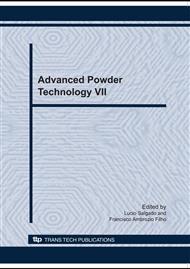p.561
p.567
p.573
p.581
p.587
p.593
p.599
p.605
p.617
Solidification of Eutectic Bi32.5In51Sn16.5 Alloy under Microgravity Using a Drop Tube
Abstract:
Containerless solidification of Bi32.5In51Sn16.5 eutectic alloy under microgravity conditions was investigated by using a 3 m length drop tube. The Bi-In-Sn system is an important material for lead-free solder and fuse element for electrical protection. It has a low eutectic melting temperature of 60°C, which is suitable for experiments in restricted environments like the International Space Station (ISS), where the security requirements are very strict. Droplets, with diameters in the range of 200 to 400 m, solidified under microgravity, were obtained consistently with irregular ternary eutectic structure, whereas, previous results under normal gravity presented both regular lamellar and irregular structures.
Info:
Periodical:
Pages:
587-592
Citation:
Online since:
October 2010
Authors:
Keywords:
Price:
Сopyright:
© 2010 Trans Tech Publications Ltd. All Rights Reserved
Share:
Citation:


